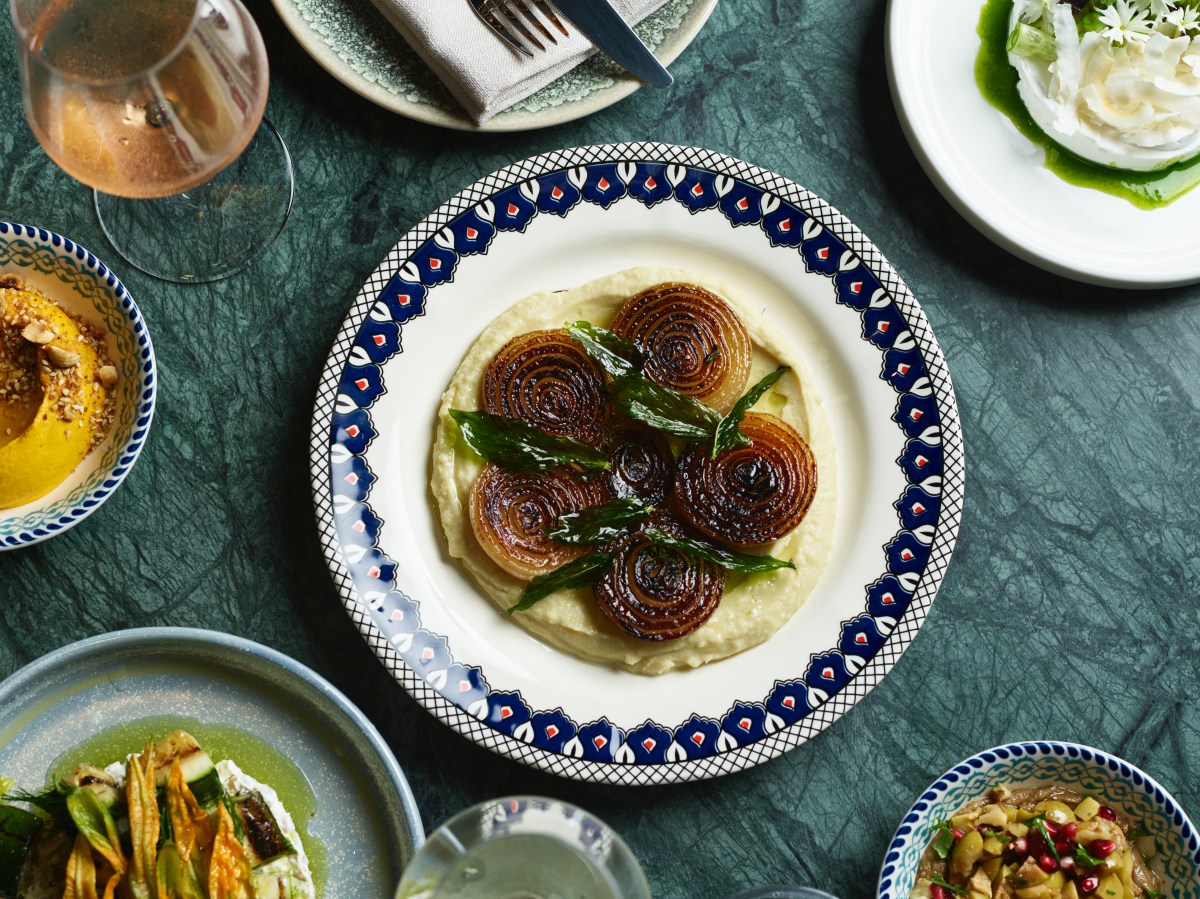Plant-based dining is well past the point of being a trend. Individuals are making efforts to reduce their meat and dairy intake — or forgoing its consumption all together — and the industry has responded, providing multiple options in-venue.
While the plant-based movement has made waves in the Western world in recent years, the concept is nothing new for many people. In parts of the Middle East, South America, Asia and Africa, plant-based eating and cooking practices have long been considered the norm.
Vegetable-driven dishes from Turkey focus on hardy shoots and greens, while Indonesia hones in on soy-based sauces, tofu, tempeh and fruit. Over in India, vegan and vegetarian street food options encompass deep-fried snacks, punchy condiments and lentil stews.
There are many avenues a chef can take when creating plant-based menus that extend beyond ready-made products. Hospitality talks to Arman Uz from Maydanoz, Gunjan Aylawadi from Flyover Fritterie, Alfan Musthafa from Ma Pa Me about inherently plant-based foods across cuisines.
Turkish
Turkish food is typically pigeonholed into meat-heavy dishes such as lamb, kofte and kebabs. But Chef Somer Sivrioğlu set out to challenge the misconception with his most recent venue Maydanoz. The plant-based eatery recently opened its doors and has seen Executive Chef Arman Uz work with Sivrioğlu to craft a menu that’s reflective of home-cooked meals made in Western Turkey. “80 to 90 per cent of the menu is vegetable dishes,” says Uz. “We are cooking what our mums put on the table as kids and what Turkish people really eat at home.”
Part of the coastline in Western Turkey sits alongside the Aegean Sea, which provides an ideal environment for fresh produce. “Vegetables are grown on the Aegean coast and the climate really allows that,” says Uz. “We take guidance from the region, and because olives grow there, a lot of the vegetables [on the menu] are cooked in an olive oil base.”
Uz says economic and sociological factors have very shaped much of Turkey’s vegetable-driven dishes. “In Turkey, vegetables are really cheap and meat is really expensive,” says the chef. “The Turkish people were [also] nomads and would travel carry livestock with them to get milk, cheese and yoghurt out of their cows or sheep, so they’d try not to eat them.”
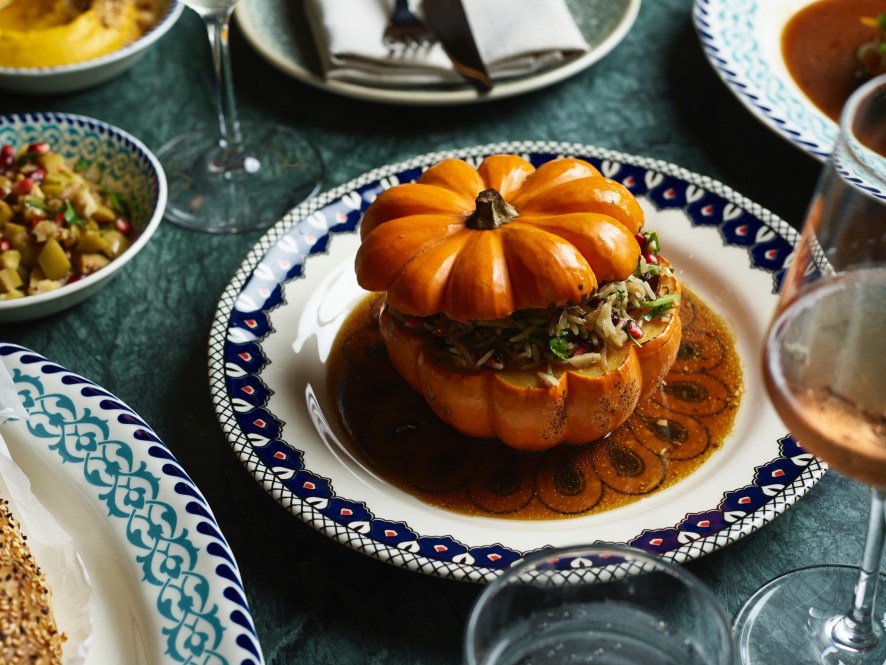
The seasons dictate the offering at Maydanoz, which means the menu will evolve every few months. “We see what is available and what we can do with it,” says Uz. “The menu today allows us to use cabbage, Brussels sprouts, cavolo nero, cauliflower shoots and spinach, but things will change in two to three months.”
Fresh vegetables are locally sourced from a supplier, while herbs are selected from the Sydney Markets. Other Turkish ingredients such as sundried vegetables and pastes are harder to come by in Australia. “Sundried vegetables, pickles, preserved vegetables and tomato paste from Turkey tastes different,” says Uz. “We use lots of capsicum paste and dried vegetables from Turkey. Turkish people have lots of produce in summer, so they sun dry it, pickle it and prepare it for winter.”
Such items are integral to the development of flavour profiles. Uz references sundried eggplant, which is the hero ingredient in quintessential dishes such as Imam biyaldi (stuffed eggplant). “Sun-drying adds a totally different dimension,” says the chef. “Eggplant is picked in the high season, sundried on a string and sold at the Turkish markets in Auburn. You soak them in hot water before stuffing them with rice. The bitterness of the eggplant totally changes the flavour.”
Maydanoz’s menu is divided into three sections. Diners usually start a meal with dishes seen in a traditional Turkish venue known as a meyhane. “Meyhane translates to bar,” says Uz. “When you look at the old meyhane menus, it has lots of vegetable dishes and not much meat.”
The menu begins with cold dips including houmous made with chickpeas and carrot along with a modern variation on cacik. “Cacik is like Greek tzatziki, but I’m using coconut yoghurt instead of sheep’s yoghurt,” says Uz. “I’m making it a bit healthier and vegan. It can be topped with grilled cucumber or meat.”
The second part of the menu hits a warmer note with dishes such as mum’s spinach. Pan-fried spinach is served with Brussels sprouts and fava bean puree topped with fioretto (cauliflower sprouts).
Larger Aegean-style dishes comprise the larger plates section of Maydanoz’s offering. “We have cavolo nero and leek pie with vegetables, which is a great Aegean dish,” says Uz.
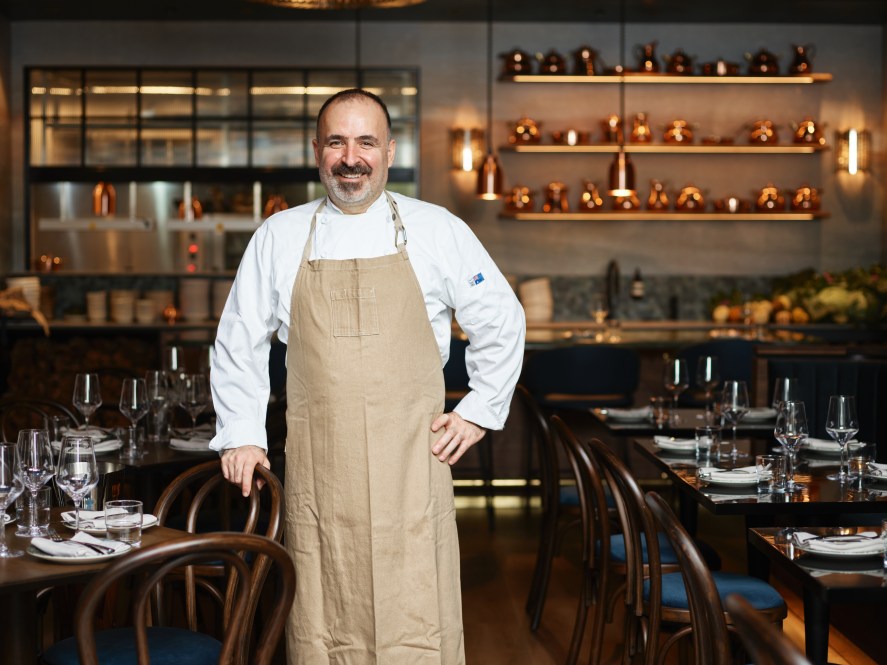
A key aspect of plant-based cooking is finding new and innovative ways to present produce. Home recipes from Turkey allows Uz and the team to introduce lesser-known Turkish foods to the Australian market. “I make a lot of mum’s dishes at a restaurant quality,” says Uz. “It’s a win-win: for us, it’s putting something new on the menu and it’s also a surprise for guests who try things they’ve never seen in a restaurant before.”
Indian
There is a long history of vegetarianism in India linked to the different religions practised in the country. “It’s mainly religious for a lot of people,” says Owner of Flyover Fritterie Gunjan Aylawadi. “A lot of animals are considered gods or deities and we pray to them, so we can’t eat them.”
Aylawadi is vegetarian and says India’s food landscape is abundant when it comes to options. “It’s a heavily plant-based culture,” she says. “People in many parts of India only eat plant-based food and don’t even consider eating meat. There are very few non-vegetarian options and pretty much all the meat-based options can be tailored to become vegetarian.”
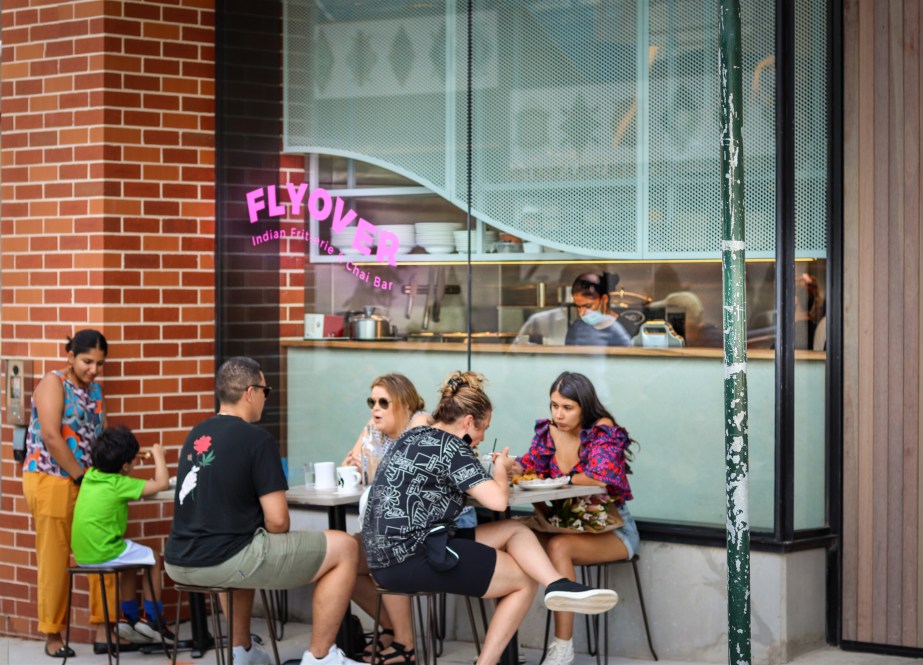
Flyover Fritterie started as a hole-in-the-wall in Sydney’s CBD, but recently moved into a larger space in Redfern. The venue specialises in both vegan and vegetarian Indian street food. “It’s mainly vegan, but we have a few vegetarian options,” says Aylawadi. “There are a few recipes with ghee, which is unavoidable due to the nature of those dishes.”
Traditional items you’d see in India have been modified to cater to dine-in service, but the premise is the same. “Our focus is street food, but in a way that is consumable for the audience we’re working with,” says Aylawadi. “Things are presented in a manner which is more contemporary and easier to eat in a cafe setting because not everyone’s familiar with certain ways of eating as they are in India.”
The menu largely centres around a spiced fritter called a pakora. “It is basically whatever vegetables are in season,” says Aylawadi. “You chop them up, make a batter with chickpea flour, dip your vegetables in and give them a quick fry. We really wanted to show all the other things Indian food does well, and fried food is a gateway into any cuisine.”
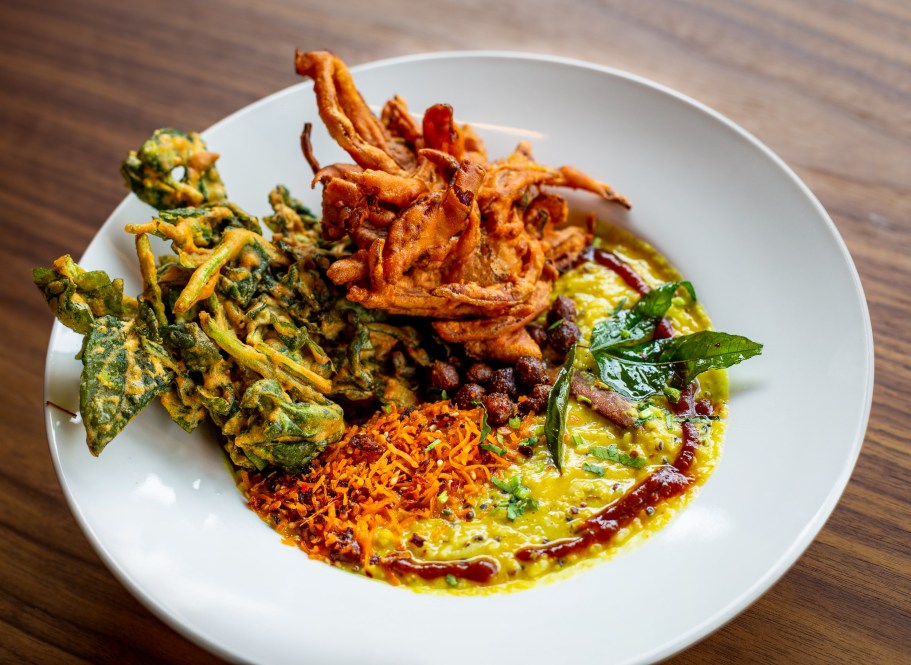
While many customers come for the pakora, the khichri bowls are equally as in demand. The lentil-based stew is commonly eaten with pakoras and additional side dishes. “It’s considered India’s national dish and is a stew of lentils, rice and vegetables,” says Aylawadi. “We serve it with pickles, condiments, chutneys and the vegetable fritters.”
Each component is served separately in India, but Flyover has compartmentalised each item in one neat package. “In India, they are served in small katori bowls and we just know how much pickle to use with lentils, rice, khichri and fritters,” says Aylawadi. “Here, we serve it in a bowl with the right amount of pickle and khichri you need to eat so none of the flavours are overpowering.”
Seasonality is of the utmost importance to Aylawadi and integral to Flyover’s overall ethos. “My parents would tell me if something’s not in season after every month,” she says. “There are many hyper-local vegetables grown over there [India] that are in season for maybe a month.”
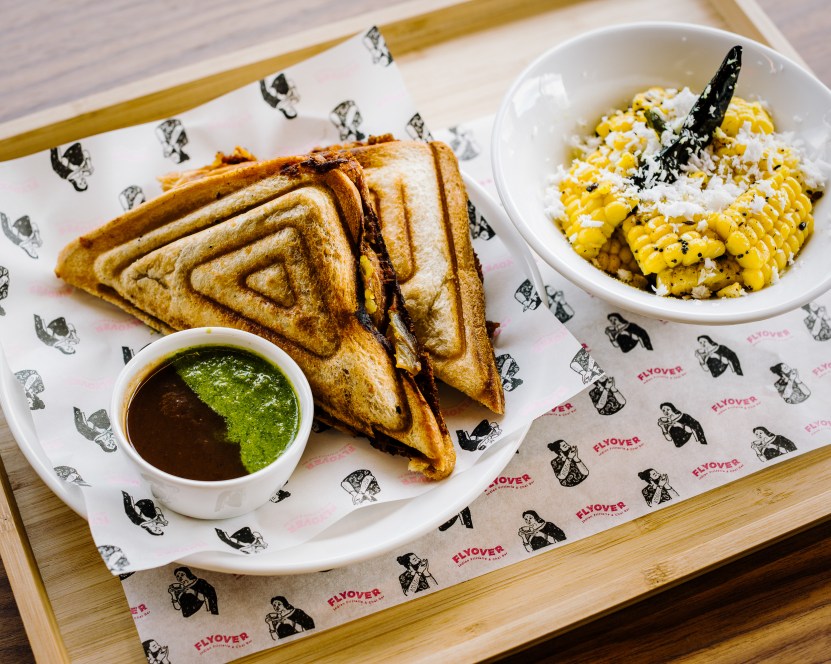
An example is the chaat. “Our menu has flipped over for winter, and we have a winter greens chaat,” says Aylawadi. “We take fresh spinach and kale to some batter and fry them until they’re crispy and serve them with chutneys and yoghurt, which is something we wouldn’t typically do in summer. In summer, we make a cold version.”
Another chaat variation uses roasted sweet potato and demonstrates crafty cooking methods and techniques. “We take the sweet potatoes and put them in a bit of salt, which is a very common way of doing things in India,” says Aylawadi. “We use all sorts of techniques; whatever brings the most flavour out of the vegetables we’re working with.”
The kinds of ingredients Aylawadi works with are staples in Indian cookery. The restaurant is never short on spices and variety is crucial. “We have a library of spices over here that have a dual role; they cool the body down in summer and warm the body up in winter,” she says. “It’s just about how to combine them. In winter, there’s a lot of black cardamom, cinnamon and chilli. In summer, there’s more cumin. Things keep moving and changing every few months.”
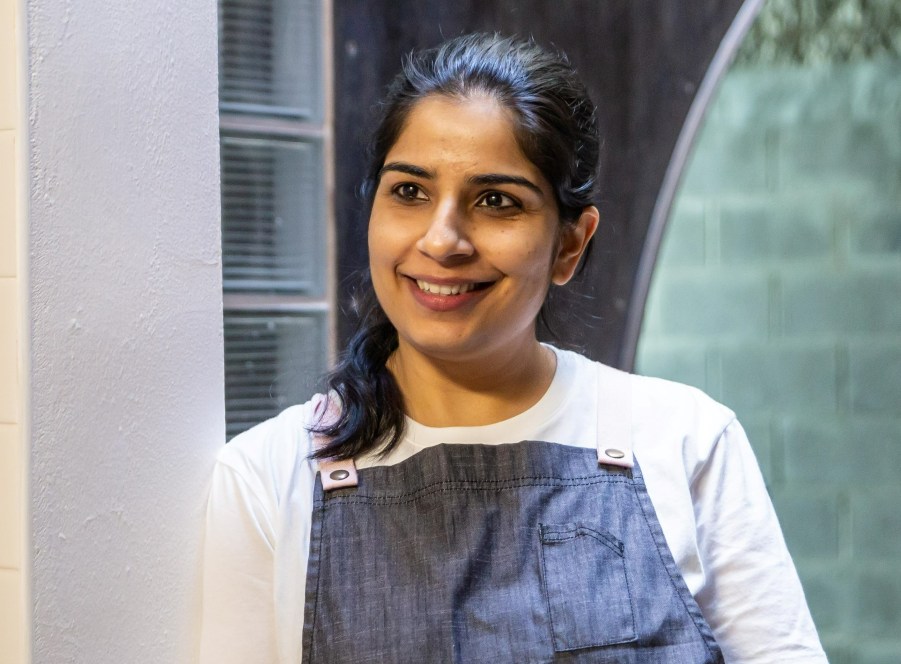
Flyover Fritterie’s menu provided Aylawadi with the opportunity to educate her customer base on the vast nature of Indian cookery. “People really enjoy coming in and they make an effort to understand the story behind why we pick certain ingredients over others or how certain lentils are completely different what we had the previous week,” she says. “People constantly tell us about something they miss from summer and how we should absolutely bring it back. They have also started to understand vegetables taste best in their own season.”
Indonesian
Ma Pa Me is an Indonesian and South-East Asian restaurant that launched in Brisbane’s Southbank late last year. It’s the brainchild of Alfan Musthafa who trained in Nusa Dua, Bali, before coming to Australia. The restaurant has a categorised menu with one section dedicated to vegan dishes. “In Indonesia, we have a lot of plant-based food,” says Musthafa. “I didn’t have any difficulty creating plant-based dishes for the menu because it’s what I had when I was a kid.”
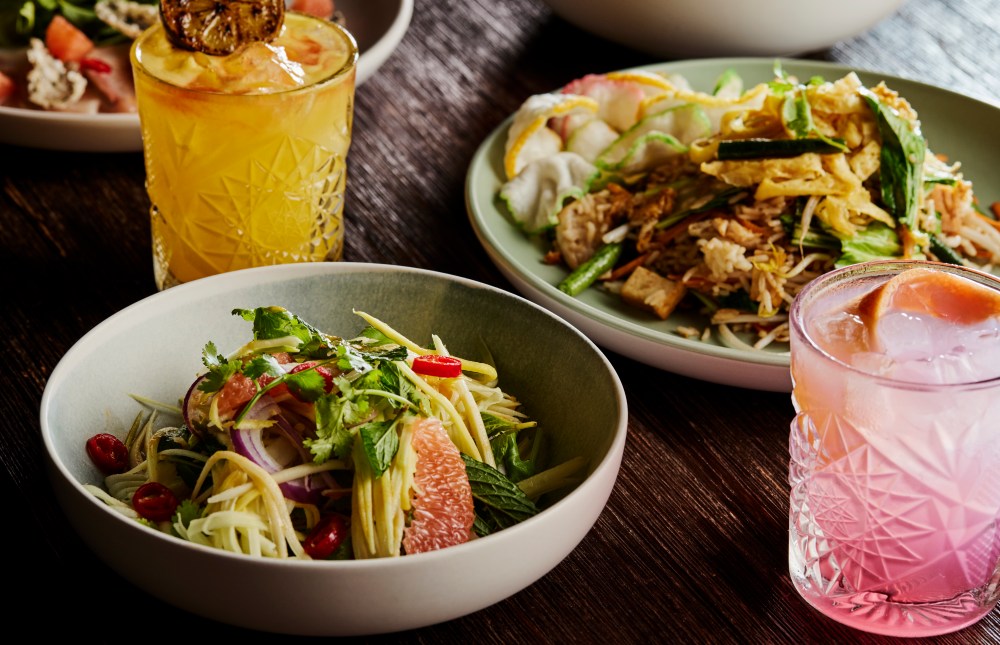
Musthafa uses the word “nostalgic” when asked to describe the offering at Ma Pa Me. Many of the dishes are inspired by family memories, which are interwoven throughout the venue. “The name Ma Pa Me means grandma, grandpa and me,” says Musthafa. “It’s a family-oriented restaurant. My grandparents were farmers and they used to take me to the farm every morning when I was a kid. It’s how I fell in love with food and fresh produce.”
Ingredients such as coconut, palm sugar, peanut, soy, and chilli are foundational in Indonesia. Together, they make the sauce for gado gado; a mixed salad comprising steamed potato, cabbage, beans and fried tofu. “It’s a house-made peanut sauce with roasted peanuts blended with sambal which is the secret ingredient,” says Musthafa. “We cook it [together] with coconut cream, soy and sugar.”
The sambal at Ma Pa Me is made in-house and is a vegan take on a traditional recipe. “It’s basically a traditional sambal oelek without the shrimp paste,” says Musthafa. “Our sambal is plant-based and is just chilli, garlic, onion, coriander seeds and tomato.”
Although the majority of the dishes on the menu are plant-based by default, a highlight is a vegan rendang which substitutes beef for jackfruit. “Rendang is the most popular Indonesian dish,” says Musthafa. “People know rendang, and I wanted to create something with the same flavour that was plant-based, so I decided to use young jackfruit and the result is amazing.”
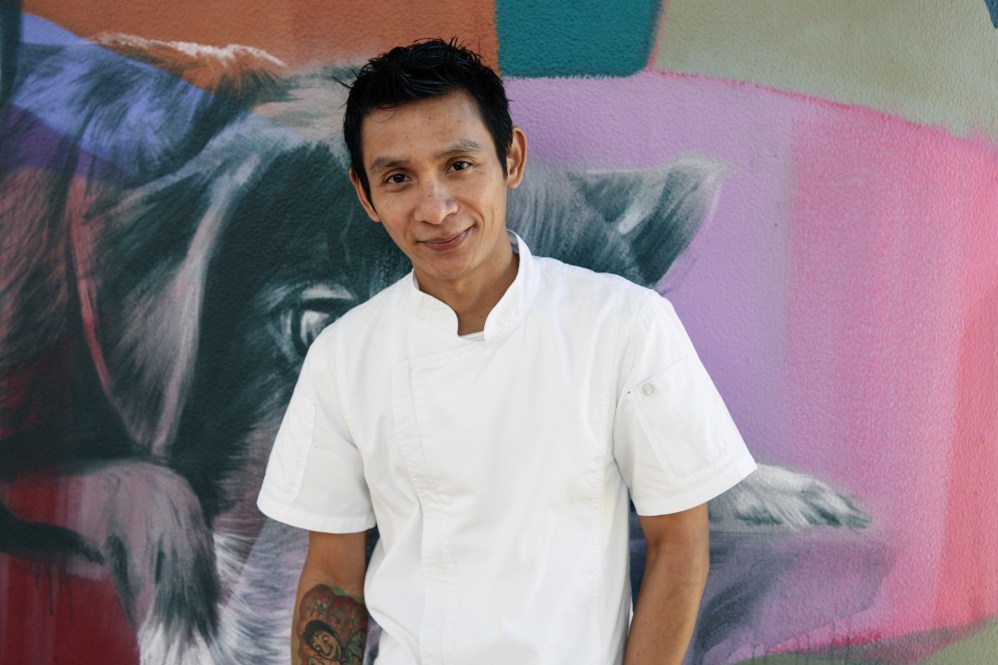
Musthafa also makes his own rendang curry paste which is teamed with chunks of young jackfruit. “We use a lot of herbal spices such as ginger, galangal, turmeric, coriander seeds, cumin, fennel seed, chilli, garlic, onion and coconut cream,” says Musthafa. “We cook it over the wok for five hours and then add palm sugar.”
Musthafa relies on specialty Asian grocers in the Brisbane area for sourcing staples such as bok choy, kalian and choy sum, but when it comes to tofu and tempeh, it’s a community effort. “We cooperate with local producers to get them,” he says. “There are a few people in the Indonesian community who make tofu and tempeh by themselves at home and we help them use it.”
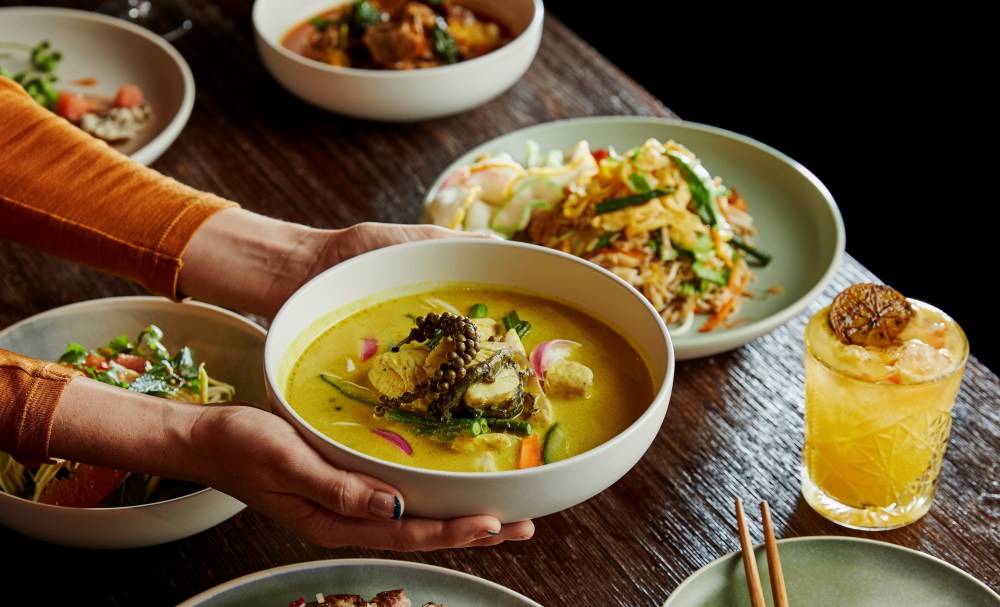
As the market for plant-based food continues to grow, it has become important for chefs to diversify their skill set. It’s something that has come naturally to Musthafa, who has managed to shine a light on Indonesian cookery in the process.
“When we decided to make a plant-based menu, I just took dishes from my childhood,” says Musthafa. “It goes back to the [reality] that most of the food my family cooked was plant-based already. When we serve it at Ma Pa Me, people love it, and I’m playing around a little bit in the kitchen to create new plant-based dishes as well.”
The chef reveals future plans to show off his creativity through an epic vegan experience. “In the next few months, we’re planning to host a vegan degustation event,” says Musthafa. “We’re planning to create six to eight courses that are mostly plant-based Indonesian dishes.”

